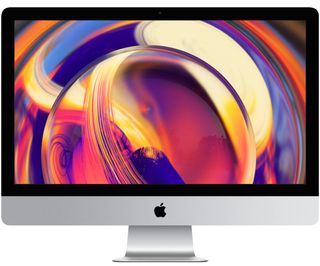
Let me guess: your computer is starting to run slower. You've had issues with it just shutting down on you or overheating every once in a while. You're thinking about getting a new Mac, but you could hold out longer if you had to. Since Apple has just launched a new iMac for 2020, you might be wondering if this is the time to upgrade or if you should hold out until that Apple silicon Mac hits later this year.
The 27-inch 2020 iMac comes with Intel's Ice Lake 10th-generation processor chip, configurable up to 10 cores comes standard with 8GB of DDR4 memory and starts with 256GB of SSD (no more fusion) storage, which can be configured up to 8TB.
It also now has a 1080p HD camera and upgraded mic array, as well as support for voice activating Siri.
You can upgrade the 27-inch iMac with Apple's unique nano-texture glass (the same technology used on Apple's XDR Pro display) for $500 and can replace the standard 1Gb Ethernet port with the blazing fast 10Gb Ethernet port for $100. Of course, your internet speeds are only as good as your internet provider, so not everyone needs a 10Gb Ethernet port.
The 21.5-inch iMac got a minor spec bump for 2020, as well. The smaller of the iMac siblings also gets full solid-state drive support, though you can still switch to a Fusion drive if you prefer.
So with the changes in 2020, should you buy the new 2020 iMac? It depends on what you need.
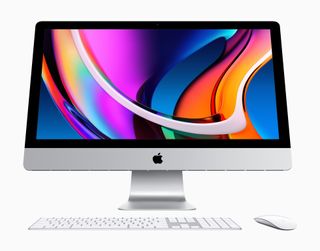
Apple's 2020 iMac is the fastest it's ever been.
If you're ready to upgrade your iMac, the newest model is just a click away. With a brand new, faster Ice Lake processor, 10 core support, and a better camera, this new iMac is running at top speed.
Are you looking for a 21.5-inch iMac or a 27-inch iMac?
This year, Apple's biggest update to the iMac was reserved exclusively for the 27-inch model. The 21.5-inch iMac only gained standard support for SSD. If you're considering upgrading the smaller model, you're not looking at a mind-blowing upgrade from last year's 21.5-inch iMac.
Master your iPhone in minutes
iMore offers spot-on advice and guidance from our team of experts, with decades of Apple device experience to lean on. Learn more with iMore!
Because Apple didn't make any sweeping changes to this smaller iMac, we also have reason to believe Apple is preparing to use this specific model as one of its early Apple Silicon Mac redesigns. It may not launch by the end of 2020, but we may see a huge change for the 21.5-inch iMac within a year.
If you're looking to replace your current model with a 21.5-inch iMac, I'd recommend holding out a bit longer if you can. Of course, the best Mac you can get is the one you need right now, so don't wait if you can't.
Are you upgrading from a 2012 or earlier iMac?

If you bought your iMac prior to late 2014, it's starting to show its age. It's a little chubbier, a little slower, or may have begun to slow down in the face of ancient cruft and modern apps. Meanwhile, Apple now has a 4K 21.5-inch iMac and a 5K 27-inch iMac, both with Retina displays, latest-generation Intel Coffee Lake processors, updated AMD graphics.
If your iMac is the mid-2012 model or older, you might want to make the leap to the current version. It is no longer part of the macOS upgrade cycle. It's just past it's prime.
The late 2012 iMac is actually still a pretty solid workhorse but does lack some of the processor and graphics enhancements under the hood that would make your daily use more efficient.
If your iMac is starting to feel sluggish, it's probably because you're regularly using some processing or graphics heavy programs that are pushing your workhorse to its limits.
Do you need the most powerful Mac possible?
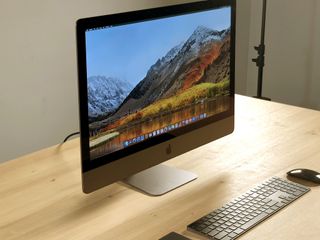
Though you could spend a minimum of $6,000 on the Mac Pro, you're probably not someone who needs quite that much power. Instead, you may be considering whether the iMac Pro is more up your alley for speed, reliability, and performance.
Last year, I recommended the iMac Pro as the most powerful Mac (this was prior to the Mac Pro's launch), but with the 2020 upgrade to the iMac, the lines become blurred yet again.
The iMac Pro hasn't seen a major upgrade since it launched in 2017. Yes, there have been incremental spec bumps to keep it fresh and fast, but the 2020 update to the 27-inch iMac really put it into a new class of speed and performance.
The baseline iMac comes standard with a 3.1GHz 6-core Ice Lake processor with Turbo Boost up to 4.5GHz. The baseline iMac Pro comes standard with a 3.0GHz Intel Xeon W processor with Turbo Boost up to 4.5GHz.
There are somethings that are definitely more advanced on the iMac Pro, like the graphics card and the fact that it's configurable up to 18 cores. But, there are still other things that are either equal to or even less than the iMac, like the FaceTime camera (same for the 27-inch iMac and the iMac Pro) and the maximum storage capacity (8TB on the 2020 iMac and only 4TB on the iMac Pro).
So, if you really need a super fast and powerful desktop computer and the Mac Pro is just TOO much Mac, I recommend customizing the 2020 27-inch iMac to better fit your needs. The iMac Pro is looking outdated and may not even be part of Apple's near future upgrade cycle. At this time, the iMac is more future-proof than the iMac Pro.
Do you already have a 2019 MacBook Pro?
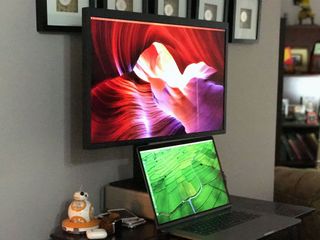
The MacBook Pro is Apple's most powerful laptop. The 16-inch MacBook Pro can hold its own against the 27-inch iMac with Retina 5K. Both have fantastic displays (500 nits!) and start with the same amount of memory. The MacBook Pro, both 13-inch and 16-inch, deliver a top-of-the-line computing experience right out of the box.
In other words, the 2019 MacBook Pro is good enough to be your desktop driver if you invest in a good quality USB-C monitor or another great monitor option. That way, you can get nearly the same level of productivity and efficiency as an iMac.
If you've just spent upwards of $2000 on a MacBook Pro, your pocketbook might be looking a little thin, and a brand new iMac might not fit into this year's budget.
You can get a lot of life out of your desktop computing by turning your brand new MacBook Pro into your workstation with the cost of a display screen, which could be a lot easier on the pocketbook than a full iMac purchase.
Are you a VR Head?
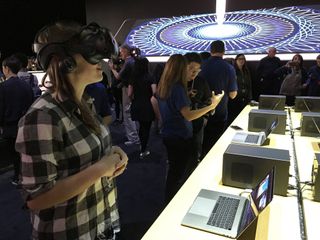
Virtual reality (VR) is supported in macOS High Sierra and later. That doesn't mean every and all computers running macOS can handle a VR headset, though. In fact, there are only a few Macs across the entire line that are capable of natively supporting VR headsets without needing an external GPU.
The 21.5-inch iMac with the Radeon Pro 560 graphics processor, the 27-inch Retina 5K, the iMac Pro, and the Mac Pro are the only Macs currently outfitted with the hardware capable of handling VR without an external GPU.
So, if you're really into VR, you're going to want to get the 27-inch iMac or at least the 21.5-inch model with the highest graphics card.
Are you more interested in Apple silicon?
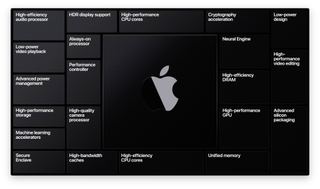
The big news out of WWDC 2020 was that Apple will start making Macs with its own in-house chip, at least one of which will be available by the end of this year. Which one that is, is a question we're all asking.
Different experts have differing opinions as to which Mac will get the Apple silicon upgrade first. Some speculate it will definitely be a laptop because Apple wants to show off how powerful, yet battery saving Apple silicon can be. Others believe it will be an iMac because there is a rumor that a complete redesign of the iMac has floated around. Personally, I'm in Camp Laptop because it makes the most sense from a marketing perspective.
That would mean it may be a while before we see an iMac with Apple silicon. Are you willing (or able) to wait? If so, definitely wait. Like I mentioned earlier, there is a chance we'll see a 21.5-inch iMac within a year.
If you don't care who makes your processor, you just want it to be fast, this is the iMac for you. A lot of people out there don't even know what the difference is between Intel silicon and Apple silicon. They just want a new Mac.
There are also some of you that can't risk making such a big switch without it potentially affecting your business/art. Apple silicon is
Do you need a better webcam?

It's 2020, and the pandemic of the century has forced many of us into new home offices we weren't prepared for. For the first time, a lot of people are realizing that, either they don't have a webcam at all, or the webcam they have is ... meh.
The iMac, prior to 2020, only had a 720p iSight camera. It's not terrible, but it's also not really very good.
The 2020 27-inch iMac now sports a 1080p iSight camera, which for a lot of people is going to be a big reason to buy. I get it. I have video meetings all day here at iMore and also video podcast twice per week. That's exactly why I bought an external webcam for my Mac.
At this time in the pandemic, it's very difficult to get a good webcam. They're usually sold out. A lot of people are stuck with whatever is built in to their computer. A 1080p cam is a huge bonus for a new Mac.
No, a better iSight camera isn't the only reason you should upgrade, but it's certainly a justification if you were already thinking of upgrading anyway, especially with the other upgrades for the 2020 27-inch iMac.
How important is a matte screen?
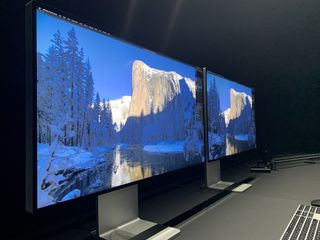
The 2020 27-inch iMac introduces a matte screen for the iMac for the first time. Apple doesn't call it "matte," however. It's called nano-texture, and it's the same technology Apple uses on the Pro Display XDR. It costs an additional $500 and, in my opinion, it's worth every penny.
If you want a matte screen, if you have always wished there were a matte alternative to Apple's display, this new nano-texture is almost a reason to buy all by itself.
I love a matte screen, but have always been a little disappointed in the way it actually looks. It's kind of ... fuzzy, like someone wiped Vasaline across the screen.
Not Apple's nano-texture. It's incredibly crisp and clear, while also providing the anti-glare you want.
Right now, the 27-inch iMac is the only desktop Mac with nano-texture technology if you don't count the $600 Pro Display XDR (which doesn't come with any Mac, so my statement still stands). That doesn't mean it will always be the only desktop Mac with nano-texture technology. It's likely that we'll see a nano-texture option for every desktop Mac across the board eventually, and we may even see it appear on Mac laptops with enough time for development research.
If the stars have aligned for you; You need a new computer, you don't care about Apple Silicon, and you don't have any interest in a Mac redesign, drop the extra $500 on the nano-textured screen if you prefer matte.
So, should you upgrade to the 2020 iMac or not?
Cost is always one of the most important things to consider when buying a new computer. I can't make that decision for you. I can, however, recommend whether you should or shouldn't upgrade to the new iMac, depending on what you currently own and what your needs are.
- Is your current Mac computer older than mid-2012? Then the answer is yes. You can't update to the latest operating system (security becomes an issue), the processor is older, and there are fewer cores.
- Do you need the most powerful computing device? Then the answer is yes-ish. Currently, the lines are blurred between the iMac and the iMac Pro when it comes to power and performance. Sure, you can get more from the iMac Pro if you pay for the upgrades, but the iMac Pro is only getting incremental upgrades, and the 2020 iMac has caught up. Of course, if you need the most powerful Mac, you need a Mac Pro.
- Do you have a late 2019 or newer MacBook Pro? You might be able to make due with what you have, plus a nice external display (heck, you could even go crazy and get the Pro Display XDR). The current model MacBook Pro is incredibly powerful and can handle much of your daily workflow, especially if you can view it all on a 4K or 5K external screen.
- Do you want VR on Mac without needing an external GPU? Then the 27-inch iMac offers more variety in options (the 21.5-inch iMac must have the Radeon Pro 560 graphics card).
- Do you want Intel or Apple silicon? A lot of Apple fans are going to say that buying an Intel Mac right now is a bad idea. I disagree, however. There are lots of people that aren't willing to be early adopters of an Apple Silicon Mac in case it breaks their most important programs. Some people just don't care whether Apple makes the processor or Intel. They just want the fastest, most powerful iMac right now. If you are itching for an Apple Silicon Mac, you only have a few months to wait. If you don't care, don't wait.
Lory is a renaissance woman, writing news, reviews, and how-to guides for iMore. She also fancies herself a bit of a rock star in her town and spends too much time reading comic books. If she's not typing away at her keyboard, you can probably find her at Disneyland or watching Star Wars (or both).
